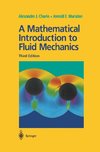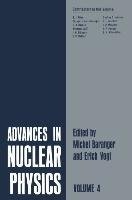
-
 Anglický jazyk
Anglický jazyk
Advances in Nuclear Physics
Autor: Erich Vogt
1 The Investigation of Hole States in Nuclei by Means of Knockout and Other Reactions.- 1. Introduction.- 2. Formalism for Knockout and Pickup Reactions.- 2.1. The Matrix Element and Overlap Integral.- 2.2 The Single-Nucleon Case.- 2.3. The Two-Nucleon Case.-... Viac o knihe
Na objednávku
49.49 €
bežná cena: 54.99 €
O knihe
1 The Investigation of Hole States in Nuclei by Means of Knockout and Other Reactions.- 1. Introduction.- 2. Formalism for Knockout and Pickup Reactions.- 2.1. The Matrix Element and Overlap Integral.- 2.2 The Single-Nucleon Case.- 2.3. The Two-Nucleon Case.- 2.4. The Multi-Nucleon Case.- 2.5. Distortion and Finite-Range Effects.- 3. Single-Nucleon Knockout and Related Reactions.- 3.1. Comparison of Knockout and Pickup Reactions.- 3.2. Special Features of Knockout Reactions.- 3.3. Spectroscopic Studies.- 3.4. Proton States.- 3.5. Neutron States.- 4. Cluster Knockout and Related Reactions.- 4.1. Comparison of Knockout and Absorption Processes.- 4.2. The Quasi-Free or Peripheral Model.- 4.3. The Microscopic Model.- 4.4. The Effect of Exchange.- 4.5. Spectroscopic Studies.- 4.6. Comparison with Pickup Reactions.- 5. Other Reactions.- 5.1. Pion Reactions.- 5.2. Kaon Capture.- 5.3. Coulomb Disintegration.- 5.4. Inelastic Scattering to the Continuum.- 6. Summary and Conclusions.- Acknowledgments.- References.- 2 High-Energy Scattering from Nuclei.- 1. Introduction.- 2. Models of High-Energy Scattering. Scattering of Objects with ¿Preexisting¿ Subunits.- 3. Existing Evidence Supporting Our Understanding of the High-Energy Scattering.- 3.1. Scattering from Deuteron.- 3.2. Scattering from 3He, 4He, 6Li, 7Li, and 9Be Targets.- 3.3. Scattering from 12C and 16O Targets.- 3.4. Scattering from 27A1, 64Cu, 208Pb, and 238U Targets.- 3.5. Total Cross Sections.- 4. Scattering of Objects without ¿Preexisting¿ Subunits. Scattering from Fluctuations.- 5. Prospects of what Nuclear Physics and Particle Physics Can Learn from High-Energy Nuclear Scattering.- 6. Concluding Remarks.- Acknowledgments.- Appendix A.- Appendix B.- References.- 3 Nucleosynthesis by Charged-Particle Reactions.- 1. Introduction.- 1.1. Nuclear and Elemental Abundances.- 1.2. Possible Sites for Nucleosynthesis.- 1.3. Nucleosynthetic Processes.- 2. Charged-Particle Reaction Rates.- 2.1. General Case and Definitions.- 2.2. Nonresonant Charged-Particle Reactions.- 2.3. Isolated Narrow Resonances.- 2.4. Broad Overlapping Resonances.- 2.5. Excited State Reactions.- 2.6. High Level Density Region, Continuum Cross Sections.- 3. Hydrogen Burning.- 3.1. The p-p Chain.- 3.2. The C¿N¿O Bi-Cycle.- 3.3. Solar Neutrinos.- 4. Helium Burning.- 4.1. The Triple-? Process.- 4.2. The 12C(?, ?)16O Reaction.- 4.3. Further Helium-Burning Reactions and Comparison with Abundances.- 4.4. 14N(?, ?)18F and 18O(?, ?)22Ne.- 5. Synthesis of the Nuclei with 20 ? A ? 60.- 5.1. Quiescent Carbon and Oxygen Burning.- 5.2. Quiescent Silicon Burning.- 5.3. Explosive Carbon, Oxygen, and Silicon Burning: Supernovae.- 6. Synthesis of the Nuclei with A ? 60 and the l-Process.- 6.1. The s- and r-Processes.- 6.2. Possible Neutron Sources.- 6.3. The p-Process.- 6.4. The l-Process: Synthesis of D, Li, Be, and B.- 7. Nucleosynthesis in Massive Exploding Objects.- 7.1. Universal Nucleosynthesis.- 7.2. Nucleosynthesis in Supermassive Objects.- Acknowledgments.- References.- 4 Nucleosynthesis and Neutron-Capture Cross Sections.- 1. Introduction.- 2. Development of Neutron Buildup Theory.- 3. Stellar Neutron Sources.- 4. Neutron Capture Cross Sections.- 4.1. Techniques in the Measurement of keV Capture Cross Sections.- 4.2. Maxwellian-Averaged Cross Sections at 30 keV.- 4.3. Comments on Cross-Section Data.- 5. Abundance-Cross-Section Correlations.- 5.1. Abundances.- 5.2. Solar System Ns?(A).- 5.3. Isotopic Tests of Ns?(A).- 5.4. Comments on Ns?(A) and Nr(A).- 5.5. r-Process Abundances¿Nr(A).- 5.6. Chronology.- 6. Conclusion.- Acknowledgments.- References.- 5 Nuclear Structure Studies in the Z = 50 Region.- 1. Introduction.- 1.1. The Tin Region.- 1.2. Shell-Model Description.- 2. Experimental Data.- 2.1. Even-Mass Tin Isotopes.- 2.2. Odd-Mass Tin Isotopes.- 2.3. Odd-Mass Antimony Isotopes.- 2.4. Odd-Mass Indium Isotopes.- 3. Theoretical Calculations.- 3.1. General Discussion.- 3.2. Comparison with Experimental Results.- 4. Conclusion.- Acknowledgments.- References.- General References.- Even-Mass Tin Isotopes.- Odd-Mass Tin Isotopes.- Odd-Mass Antimony Isotopes.- Odd-Mass Indium Isotopes.- Pittsburgh Calculations.- Trieste Calculations.- Chalk River Calculations.- 6 An s¿d-Shell-Model Study for A = 18¿22.- 1. Introduction.- 2. Model Hamiltonians.- 2.1. List of the Hamiltonians Used.- 2.2. Further Comments on the Realistic Two-Body Interactions K and KB.- 2.3. Further Description of the Least-Square Hamiltonians.- 3. Excitation Energies and Spectroscopic Factors.- 3.1. Excitation Energies: Introductory Remarks.- 3.2. Spectroscopic Factors: Introductory Remarks.- 3.3. Nucleus-by-Nucleus Comparison between Experimental Results and K+17O Results.- 3.4. Comparison of Results from Different Hamiltonians.- 4. Ground-State Binding Energies.- 5. Electric Quadrupole Moments and E2 Transitions.- 5.1. The Effective Operator Q2.- 5.2. Shell-Model E2 Results vs Measured E2 Results.- 5.3. Comparison of E2 Results from Different Shell Models.- 5.4. Comparison with E2 Results from Rotational Models.- 6. Magnetic Moments and M1 Transitions.- 6.1. The Effective M1 Operator.- 6.2. Magnetic Moments: Shell-Model vs Experiment.- 6.3. Magnetic Moments: Variation Among Shell-Model Results from Different Hamiltonians.- 6.4. Magnetic Dipole Transitions.- 6.5. Comparison to Ml Results from Rotational Models.- 7. Summary and Final Remarks.- Acknowledgments.- Appendix A. Shell-Model Basis and Methods.- A.1. Coupling Scheme.- A.2. Phases.- A.3. Computer Codes.- References.
- Vydavateľstvo: Springer US
- Rok vydania: 2013
- Formát: Paperback
- Rozmer: 229 x 152 mm
- Jazyk: Anglický jazyk
- ISBN: 9781461582304

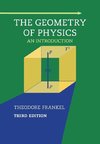
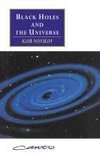
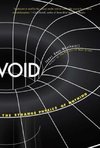
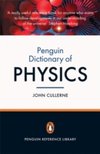


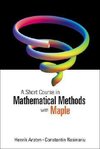
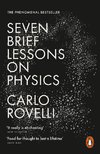

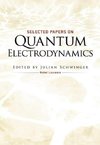

 Nemecký jazyk
Nemecký jazyk 